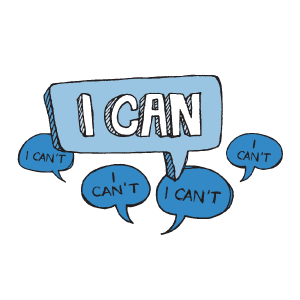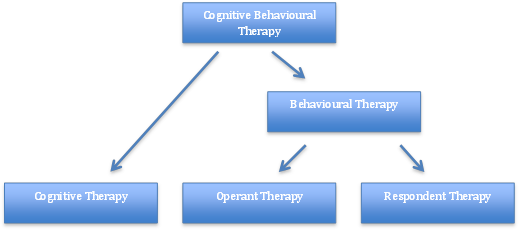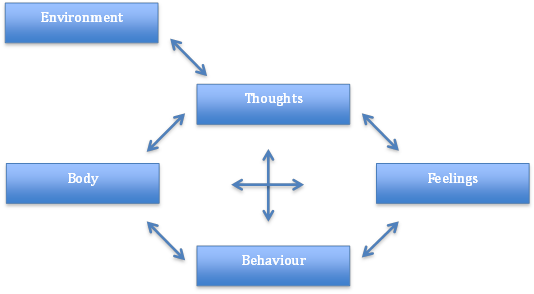What is Pain Management?
Pain management is an area of modern medicine which utilises the multi-disciplinary team to help ease the pain and suffering of patients living with long-term pain to improve their quality of life[1]. Medicine is usually the first port of call to manage pain, however, when pain is not responsive to medication, or resistant to treatment, or persists after healing has occurred and an exact cause of the pain has not been found the alternative treatment or a combined approach can be used[2].
The alternative to medicine or combined approaches to pain management are broad and each of which can be based upon different paradigms of understanding pain. The different approaches come from the wide range of healthcare professionals unique treatments towards pain management, not only limited to Mental-Health or Psychiatrists but can include Physiotherapists, Occupational Therapists, Nurse Practitioners, Medics, Nuse Specialists and Massage Therapists.
Different Types of Management/Treatment
The techniques these professionals use can be and not limited to: (This list is not exhaustive and please add more!)
- Patient Education
- Operant Conditioning Approaches
- Cognitive Behavioural Therapy
- Distraction
- Classical Conditioning Approaches
- Social Support Methods
- Relaxation Methods
- Acceptance and Commitment Therapy
- Hypnosis
- Biofeedback
What is the Psychological Approach to Pain Management
As well as the neural interactions and links the brain goes through when a person is in pain, there are multiple layers of complex abstract thoughts and feelings a person goes through which culminates how much pain a person feels and how they deal with pain. Their cognitive constructs, behavioural constructs and environmental influences are all intertwined in a complex web of individuality which need to be considered and incorporated into any treatments for them to be effective and are found out during an initial assessment[3]. It is these personal, individual and holistic areas which make it a pscyhological approach sitting within the biopsychosocial model of patient treatment.
Assessment Considerations
According to Asmundson et al[3] an in-depth and thorough assessment is required to discover the root cause of psychological aspects of pain and person specific influence which will be integral to know when it comes to selection and direction of treatment. There are a number of areas which need to be covered in the assessment but arguably the most important is the consideration of the pain intensity, severity and irritability along with location, distribution and duration. This is a useful marker for measuring pain and as a tool for differential diagnosis but asking how the patient is affected functionally is an important consideration but also cruical to confirming the subjective reports of the patient. Tools such as the [3].
The idea of looking out for cognitive, behavioural and environmental influences ties with the concept of the Psychological Interventions
Cognitive Behavioural Therapy
Behaviour therapy (BT) was developed in the 1950’s independently in three countries: South Africa, USA and England [6]. It was further developed to Cognitive Therapy (CT) in the 1970’s by Dr Aaron Beck with its main application on people with depression, anxiety and eating disorders [4] [7]. However, the main evidence today focuses on CBT, after the merging of BT and CT in the late 80’s [8].
Below is a breakdown of the different aspects of CBT as a concept incorporating its namesake; both cognitive and behavioural elements. These elements can be taken further and take into account two of the most important theories to a behaviourist:
Fig.2 – Breakdown of CBT theory
CBT assumes that changing maladaptive thinking leads to change in behavior. Therapists help individuals challenge their patterns and beliefs and replace “errors in thinking such as overgeneralizing, magnifying negatives, minimizing positives and catastrophizing” with more realistic and effective thoughts, decreasing emotional distress and self-defeating behavior. By challenging an individual’s way of thinking and the way that he/she reacts to certain habits or behaviors in a constructive manner can create cognitive dissonance and therefore an opportunity to alter someones thinking patterns and behaviour[9]. Put simply CBT helps you think positively, realistically and rationally about a situation, for example here is a scenario fron the Royal College of Pscyhiatrists (Website)[10]:
You’ve had a bad day, feel fed up, so go out shopping. As you walk down the road, someone you know walks by and, apparently, ignores you. This starts a cascade of:
| Unhelpful | Helpful | |
| Thoughts: | He/She ignored me – they don’t like me | He/She looks wrapped up in themselves – I wonder if there is something wrong? |
| Emotional Feelings: | Low, Sad and Rejected | Concerned for the other person, positive |
| Physical: | Stomach cramps, low energy, feel sick | None- feel comfortable |
| Action: | go home and avoid them | Get in touch to make sure they are ok |
According to the Royal College of Psychiatrists this can be a typical CBT session[10]:
- You will usually meet with a therapist for between 5 and 20, weekly, or fortnightly sessions.
- Each session will last between 30 and 60 minutes.
- You and the therapist will usually start by agreeing on what to discuss that day.
- With the therapist, you break a / each problem down into its separate parts. To help this process, your therapist may ask you to keep a diary. This will help you to identify your individual patterns of thoughts, emotions, bodily feelings and actions.
- Together you will look at your thoughts, feelings and behaviours to work out if they are unrealistic or unhelpful and how they affect you.
- The therapist will then help you to work out how to change unhelpful thoughts and behaviours.
- It’s easy to talk about doing something, much harder to actually do it. So, after you have identified what you can change, your therapist will recommend ‘homework’ – you practise these changes in your everyday life.
CBT has six phases[9]:
- Assessment or psychological assessment;
- Reconceptualization;
- Skills acquisition;
- Skills consolidation and application training;
- Generalization and maintenance;
- Post-treatment assessment follow-up.
The reconceptualization phase makes up much of the “cognitive” portion of CBT.
A simplistic and broad understanding of the CBT model and cycle are shown below.
Fig.3 – Factors involved within the Cognitive Behavioural Therapy Model
In terms of clinical relevance CBT has been the subject of many different studies, the majority of which are not within a physiotherapists scope of practice such a substance abuse, child abuse, schizophrenia and personality disorders however as the theory develops and our profession grows it is becoming more clinically relevant. Areas such as musculoskeletal outpatients can use specially trained therapists to treat fibromyalgia[11], low back pain[9] and chronic pain.
Reconceptualising Pain
It is natural to be fearful of pain, after all it is a natural educational tool and vastly unpleasant feeling. When pain persists patients can become fearful of pain and subsequently stop doing things which cause them pain, in main examples this may be movements which is common in osteoarthritis. This fear of pain can become a perpetual cycle towards chronic pain and disability and through the use of education, reconceptualising pain, CBT and the other approaches on this page the cycle can be broken.
Relaxation is usually used in conjunction with other treatment modalities and can take on a number of forms such as spiritual or non-spiritual meditation, progressive relaxation or muscular contraction and relaxation, even imagery[12]. Typically Relaxation would count as an “Alternative” treatment and recommended to be used along side traditional medical management as opposed to on its own. This may be due to a lack of high quality evidence or unproven theoretical fundamentals underpinning the treatment. The National Institutes of Health’s National Center for Complementary and Alternative Medicine (NCCAM) defines mind–body medicine as “behavioural, psychologic, social and spiritual approaches to medicine not commonly used[12].”
One way in which relaxation therapy may work is to reduce the effect of stress on the body restoring normal equilibrium within the body systems[13]. At its most basic level, when under stress your body enters a fight or flight mechanism and a number of biochemical changes occur. Heart-rate, blood pressure increases, blood vessels narrow as well as several hormone responses such as adrenaline and cortisol as well as the neurotransmitter serotonin all increasing. These responses are essential in the short term but when these responses (as well as others) prolong and become chronic several damaging consequences occur. These may be fatigue, hypertension, anxiety, suppression of the immune system, reduction of memory and increase in body fat all of which have knock-on consequences elsewhere in the body[14][13].
Regardless of the proposed mechanisms of effect, the effect on the patients psyche can be large enough to prove the treatment worthwhile. It is also important to consider the effect of a placebo treatment on pain. However studies have proven relaxation to reduce pain level more often than not in conjunction with another modality. For example Linton & Gotestam[15] investigated the use of relaxation therapy and relaxation therapy and operant techniques and its effect on chronic arthralgic pain. Relaxation was shown to be effective at reducing pain and that the group with operant conditioning were more effective at taking pain medications[15].
Caution needs to be taken with a large amount of relaxation research as it tends to be older research however there has been some more recent investigation. Spence et al[16] compared the use of relaxation therapy and biofeedback techniques on 48 patients with chronic upper limb pain. Patients were divided into 4 treatment groups (relaxation, biofeedback, combined and 1 control) each receiving treatment twice-a-week for 4 weeks. All 3 treatment groups proved effective initially and at a 3 moth follow up. However the most effective treatment at reducing measures of pain, distress, interference in daily living, depression and anxiety was relaxation therapy (alone). At 6 months there was no difference between treatment groups[16]. Massage therapy, similar to relaxation, is typically used as an adjunct to traditional treatment modalities[17]. It is usually used alongside and compared to relaxation and other psychological treatments so was considered worthwhile to include in this article, relaxation is also considered to be one of the mechanisms of action of massage. According to [18] Massage therapy has been around since the 2nd Century BC and has since developed a number of different approaches and branches such as Swedish massage, Shiatsu, Rolfing, reflexology and craniosacral therapy[19] .
A Cochrane review appraised the research involving massage and chronic low back pain. The review appraised nine articles (8 RCTs), A large number of studies were excluded from the review as not including massage as a solitary treatment, confirming further that massage is typically an adjunct. Of the eight trials, five were judged to be of high methodological quality and three were low quality[17].
One of the studies compared massage to a placebo treatment and massage was found to be more effective. The other seven studies showed that massage was superior to relaxation, [17].
Some of this information is taken from the Physiopedia page on [20]. The concept has developed rapidly in recent years and will continue to as technology develops here is a list of some examples[21][22]: Again this is typically a treatment that needs to be used in conjunction with treatments such as postural reeducation, exercise or relaxation to maximise their effectiveness, as demonstrated by a case study by Jepson[23]. The case study involves a 45-year-old female who was involved in 4 car accidents over 15 years. The patient had no obvious pathology on MRI or x-ray but was complaining of chronic pain specifically headaches and soreness in the cervical paraspinal muscles, right morse so than the left which feels tight. VAS score of 2-10 at best and 8 of 10 at worst usually brought on by driving more than 2.5 hours, bending, being in static positions for more than 15 to 20 minutes as well as reaching overhead. The pain has responded to TENS and heat but is now creating disturbances in normal daily life. After assessment it was decided that relaxation, TENS, and stretching would be used initially and then over the following weeks EMG would be used to utilise feedback of relaxation and overactivity of muscles. EMG would then be used during functional tasks to correct any movement abnormalities which could be contributing to the pain. At a 1-year follow up pain had been reduced to VAS 2-3/10 with no pain lasting up to 2 days and 95% reduction in headaches and corrected posture. Additionally the patient reported being able to recognise and correct postural and muscular abnormalities before they became troublesome[24].
This case study is an example of how biofeedback can be used to enhance treatments which would usually be used, in this case exercise and postural reeducation by providing simple targets and practical proof to patients. As this is only a case study this may not be the case with all patients however.
Adjunct Interventions
Relaxation Therapy
Massage
Biofeedback
Additional Key Resources
Additional Biopsychosocial Models of Understanding Pain
[26].
Related Physiopedia pages






